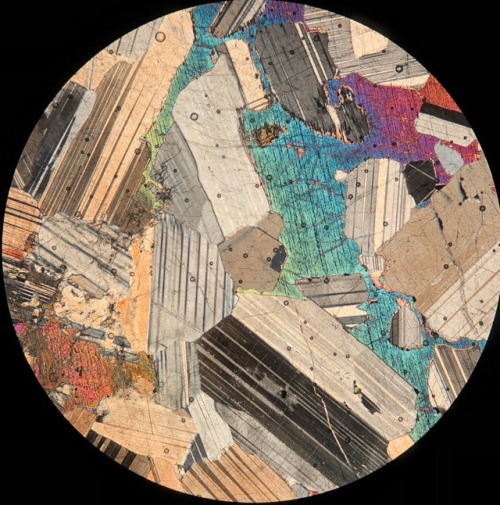#plagioclase
Alkali Feldspar crystals are large in this thin section. The alkali feldspar have subhedral crystals. The quartzy matrix in some areas is intergrown at the edge of the alkali feldspar crystal faces. The muscovite crystallized in the interstitial space and have anhedral crystal faces. To differentiate between the muscovite and the biotite pleochroism comes into effect. The biotite is darker amber under PPL and muscovite is tan/light brown. Both are pleochroic under PPL.
Post link
This rock is composed predominantly of plagioclase feldspar that are large euhedral crystals suggesting that they formed first in the melt. In the interstitial space there is clinopyroxene which suggests that the clinopyroxene formed after the plagioclase. The larger crystals do not have any form of twinning, so at first glance they look like quartz. After using the bertrand lens, the big crystals have an optic sign of biaxial which help conclude that the crystals are plagioclase and not quartz. The fractures in the big crystals have clinopyroxene crystals present. The rock is most likely an anorthosite/tonalite.
(For future posts #optmin is the tag to see all my original content!)
Post link
The plagioclase in this thin section has polysynthetic twinning. The orthopyroxene also has twinning present in most grains. The clinopyroxene is filling voids in the rock and have an anhedral structure, filling interstitial space, compared to to the plagioclase and orthopyroxene which range from subhedral to euhedral. The rock is a gabbronorite due to the presence of both orthopyroxene and clinopyroxene.
Post link



